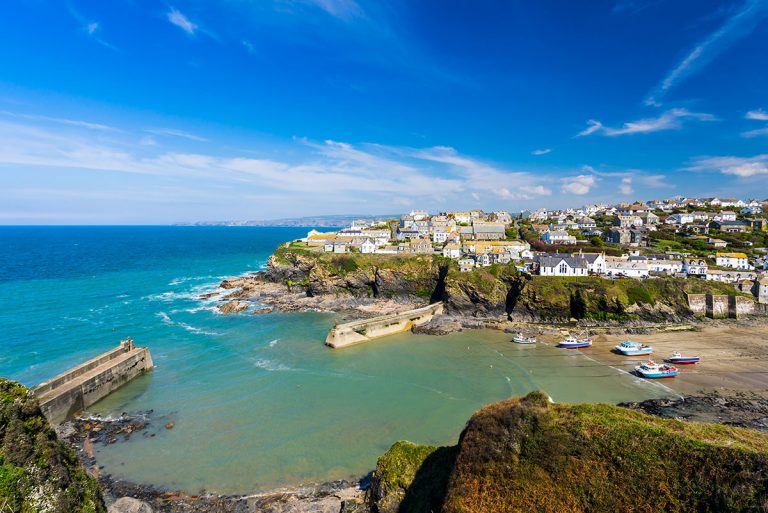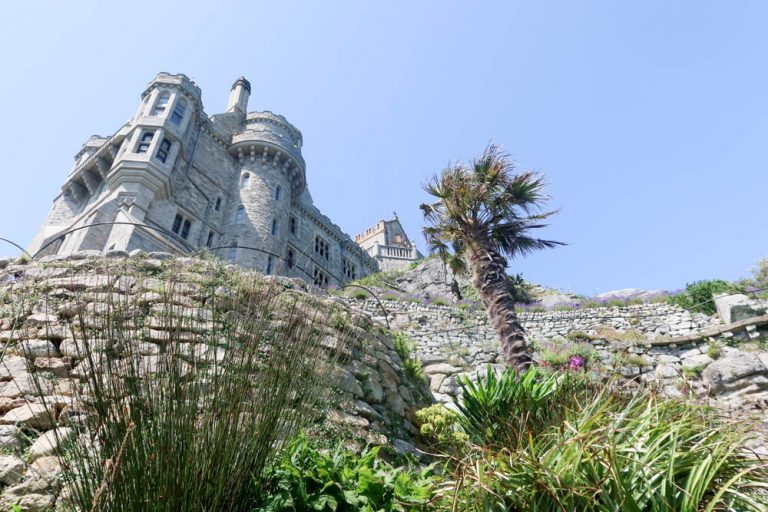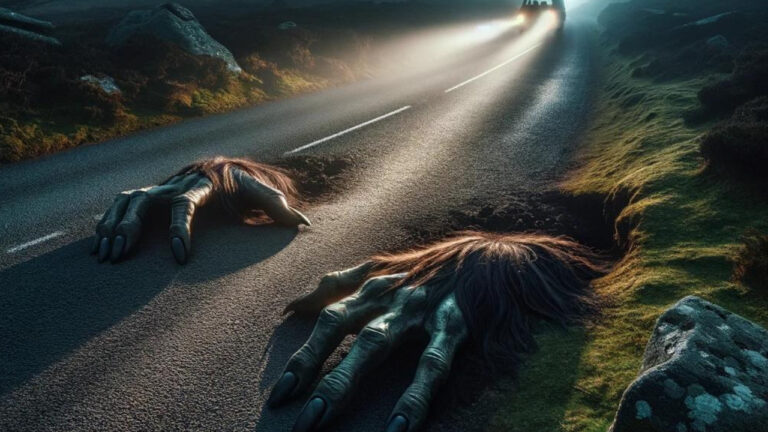20 best beaches in Devon (2024 local’s guide)
When it comes to UK beaches, Devon shines.
With two coastlines, one in the county’s north and one in the south, there are beaches for every single taste, need and style here!
Whether you’re dreaming of a hidden, tucked away cove, a renowned surfing hotspot or a broad, well-facilitated beach with lots of amenities, you’ll find it in this Devon beaches list.
I live in the beautiful Devon town of Exmouth, which is one of my favourite beaches on the south coast.
But I’ve also spent lots of time in the north part of the county, and experienced plenty of beaches here that have a whole other vibe!
I’ve compiled this list of my favourite beaches all over the county – drawn from my extensive experience living and travelling here over my entire life.
You can bet that there are some local beaches here, along with a few of the best tourist-centric beaches in South West England!
So, let’s delve into the very best beaches in Devon!
What are the best beaches in Devon?
As a local and someone who’s extensively travelled around the county, I consider the best beaches in Devon to be:
- Woolacombe Beach
- Croyde Bay Beach
- Lee Beach
- Westward Ho! Beach
- Saunton Sands
- Tunnels Beaches Ilfracombe
- Combe Martin Beach
- Lundy Island
- Exmouth Beach
- Budleigh Salterton Beach
- Dawlish Warren Beach
- Branscombe Beach
- Bovisand Beach
- Wembury Beach
- Bigbury on Sea Beach
- Beer Beach
- Hope Cove
- Oddicombe Beach
- Slapton Sands Beach
- Blackpool Sands
Woolacombe Beach

Woolacombe Beach
This has been voted one of the best beaches in the world, so of course, it’s got to make the top of the list!
Now, while I love Woolacombe Beach, I will admit that I was surprised to see this status.
However, it does offer world-class surfing conditions, plenty of amenities and lots of space to stretch out on the sand.
Plus, the scenery looking out over Morte Point and Baggy Point is also beautiful!
Woolacombe is a fun town with a few great restaurants and things to do. It’s also worth walking up to Morthoe to check out the shipwreck museum.
Plus, you can take the South West Coast Path around Morte Point to see the jagged cliffs where many ships met a sordid fate.
Also, it’s not quite big enough to make this list, but shout out to Barricane Beach which is a short walk away from the main beach. You can admire an epic sunset here!
Croyde Bay Beach
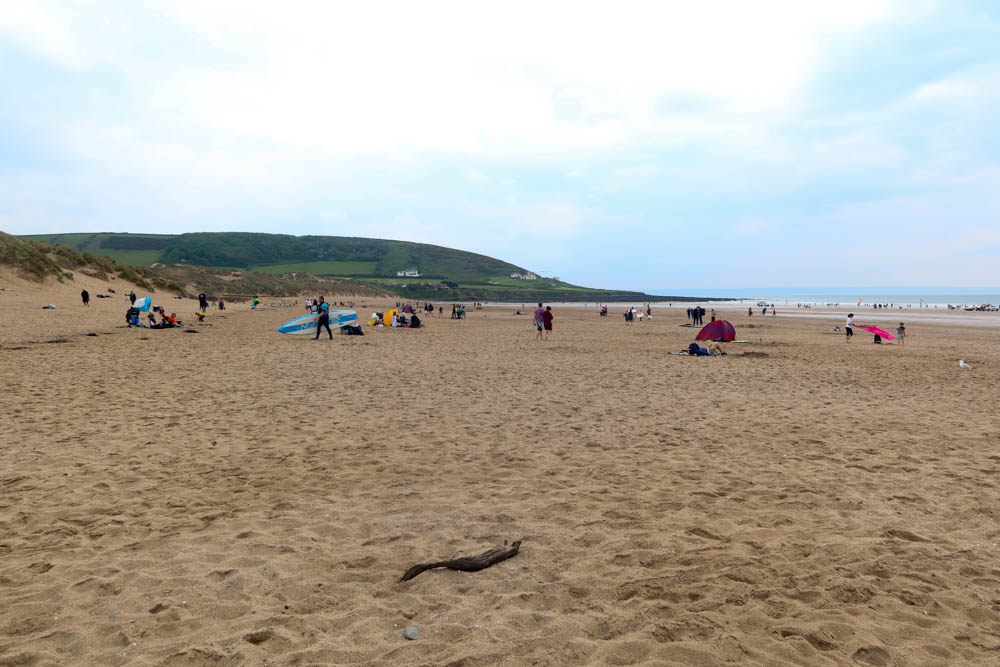
Croyde Beach is one of the most popular beaches around Woolacombe.
Another haven for surfers, Croyde Bay is a small town with fewer amenities, but it’s where quite a few surf lessons take place.
There are also a few food outlets in town. If you don’t surf, it’s quite a small place, but it’s a lovely spot to watch the world go by.
There’s also the nearby Ruda Caravan Park, which is an idyllic place to stay in North Devon!
Enjoy a scenic walk spanning from Croyde Bay to Woolacombe along the southwest coast path!
On the way, you’ll go past Putsborough Sands, which is a quieter alternative to both of these coastal towns.
Lee Beach
I promised I was going to put some lesser-known Devon beaches on this list, and Lee Bay is just that.
Situated two miles west of Ilfracombe, Lee Bay Beach is very secluded, with plenty of rock pools that make for a fun day out.
Enjoy vistas of the breathtaking Devonshire countryside, along with a backdrop of the Bristol Channel.
Lee Beach isn’t a hugely popular spot, but that’s the charm of it. It’s walkable from Ilfracombe (in fact, it’s my favourite beach around Ilfracombe), but many tourists don’t venture this far!
If you don’t want to walk, you can also drive to Lee Beach.
Westward Ho!

If you’re looking to surf, Westward Ho! could be your place.
I’m not just really excited about the name. Westward Ho! is one of only two places in the world that has an exclamation mark in its official name.
The beach spreads across the coastline, with waves suitable for every surf level. In fact, it’s the perfect spot for surfing, as there are lots of schools in the town.
It’s a blue flag beach, so you know that it has clean waters!
At one end, you’ll find the Northam Burrows and amusements like mini golf, and on the other, the South West Coast Path leads over the steep cliffs and eventually makes it to Clovelly.
Westward Ho! is a classic seaside town, with plenty of fish and chip shops and ice cream vans.
I’d also recommend taking the short journey to Appledore to see the beautiful coloured houses and take in some riverside scenery.
Check out all of the best things to do in Westward Ho! here.
Saunton Sands
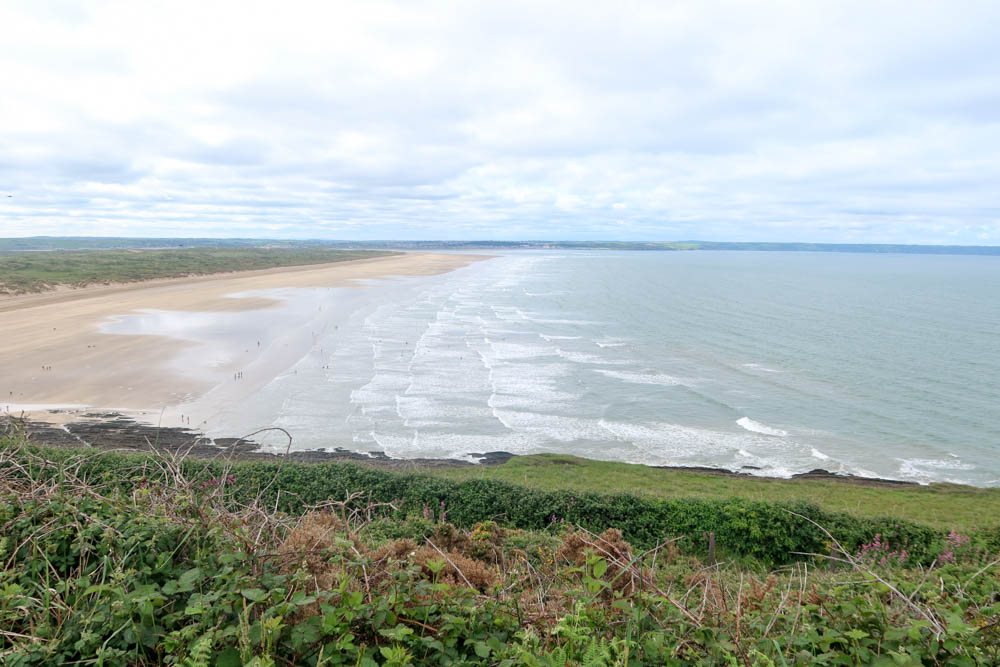
Another expansive North Devon beach, Saunton Sands expands along the coastline for a whopping three miles.
Thanks to this, you can guarantee that you’ll always find somewhere to enjoy the sun!
It’s another surfing hotspot, with schools visiting the beach daily to take advantage of its world-class waves.
It’s one of the most popular dog-friendly beaches in Devon too, with lots of space for your four-legged pals!
There’s not much in the way of amenities around Saunton Sands.
At its easterly end near Croyde Bay, there’s a cafe which serves food like sausage and egg butties (veggie sausages are available!) and a beach shop.
Behind the beach sits Braunton Burrows, a complex dune system that’s well worth a stroll around (it’s actually the biggest stretch of sand dunes in the country!).
Tunnels Beach
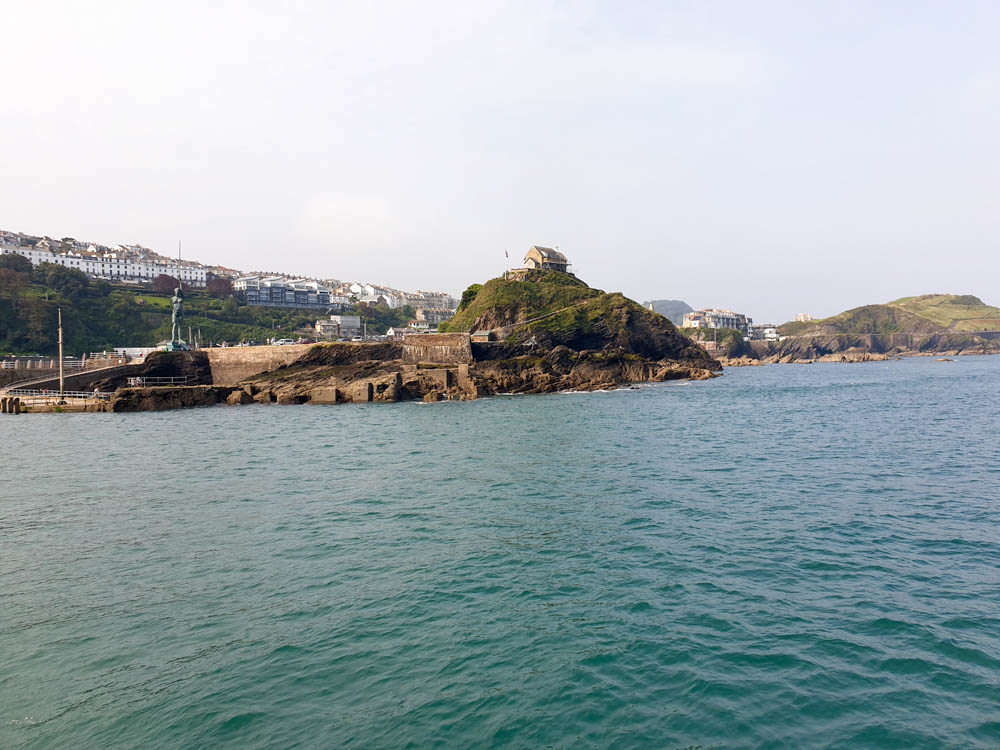
One of the most unique beaches in Devon, Tunnels Beach is in the seaside town of Ilfracombe.
This beach is actually a network of smaller secret beaches, connected together by small tunnels.
They were created during Victorian times to give beachgoers direct access to the water – before, they have to clamber down the cliffs!
Tunnels Beaches are privately owned, and you have to pay a small entrance fee to visit.
They’re worth it though – not only can you enjoy the unique experience of exploring the tunnels, but you’ll learn a little about the history too!
It’s definitely one of the best things to do in Ilfracombe!
Combe Martin Beach

Combe Martin Beach looks like it belongs on a postcard.
This idyllic sandy cove sits just to the west of Exmoor National Park.
Although it’s not huge, there’s sand, excellent rockpools for kids and adults alike, and a charming beachside pub (Focsle Inn) where you can sit and watch the world go by.
Combe Martin is a small town but has a few amenities, including accommodation and a campsite.
Lundy Island
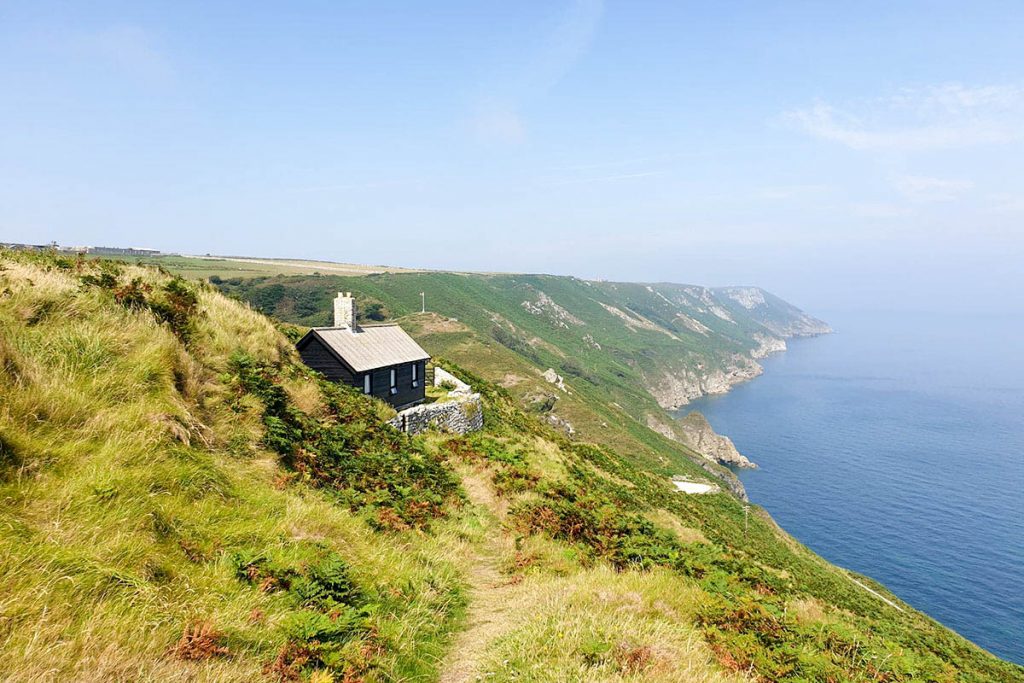
Welcome to North Devon’s answer to the Galapagos!
There are a few different beaches on Lundy Island and not all of them have a name. But I had to include it on this list regardless!
Sitting where the Atlantic Ocean meets the Bristol Channel, lapped by turquoise waters, Lundy Island is an absolute delight.
You can easily spend a day or more here exploring the inner area of the island, learning about its fascinating history and, of course, enjoying the coastline.
There’s even a friendly group of seals who live around the island (and you can go snorkelling with them!).
To reach Lundy Island, you’ll need to take a ferry from Ilfracombe. I’d recommend staying the night there – there’s so much to see – but it’s also doable on a day trip.
Exmouth Beach

Some of Devon’s best sandy beaches have made this list because of their beauty, and others for their ease of access.
Exmouth Beach manages to combine the two to create a stunning, but also very easy-to-use beach.
As a local, I think that Exmouth Beach truly has something for everybody.
Two miles of sand stretch along the shore, with plenty of rockpools at various points throughout the beach.
There’s lots of space to sunbathe, although swimming is only really safe past the RNLI station due to it being where the sea meets the Exe Estuary – currents can be strong at the western part of the beach.
The beach is ideal for water sports, thanks to the fact that it’s where the estuary meets the ocean. Enjoy SUPing, canoeing and sailing – gear and boats are rentable from the town.
Compared to North Devon, this area of the county has very calm waters!
Right at the eastern end of the beach, you’ll see the towering red rocks that mark the start of the Jurassic Coast – and if you look hard, you’ll see the Geoneedle on the top of Orcombe Point.
You can hike up here and admire the sandy shores from above – if you carry on the coastal path, you’ll reach Budleigh Salterton.
In terms of facilities, there are plenty of pubs, fish and chip shops and ice cream stores lining the seafront.
Plus, it’s only a 10-minute walk to Exmouth town centre, where there are ample more restaurants and things to do.
The beach excels when it comes to disabled access, as there’s plenty of parking right alongside.
There’s also a free beach wheelchair rental scheme, so if you or somebody that you are with uses a wheelchair, this is a great option to enable them to explore the beach.
Plus, it’s only a 10 minute walk to Exmouth town centre, where there are ample more restaurants and things to do.
The beach is great when it comes to disabled access, as there’s plenty of parking right alongside.
There’s also a free beach wheelchair rental scheme, so if you or somebody that you are with uses a wheelchair, this is a great option to enable them to explore the beach.
Budleigh Salterton Beach
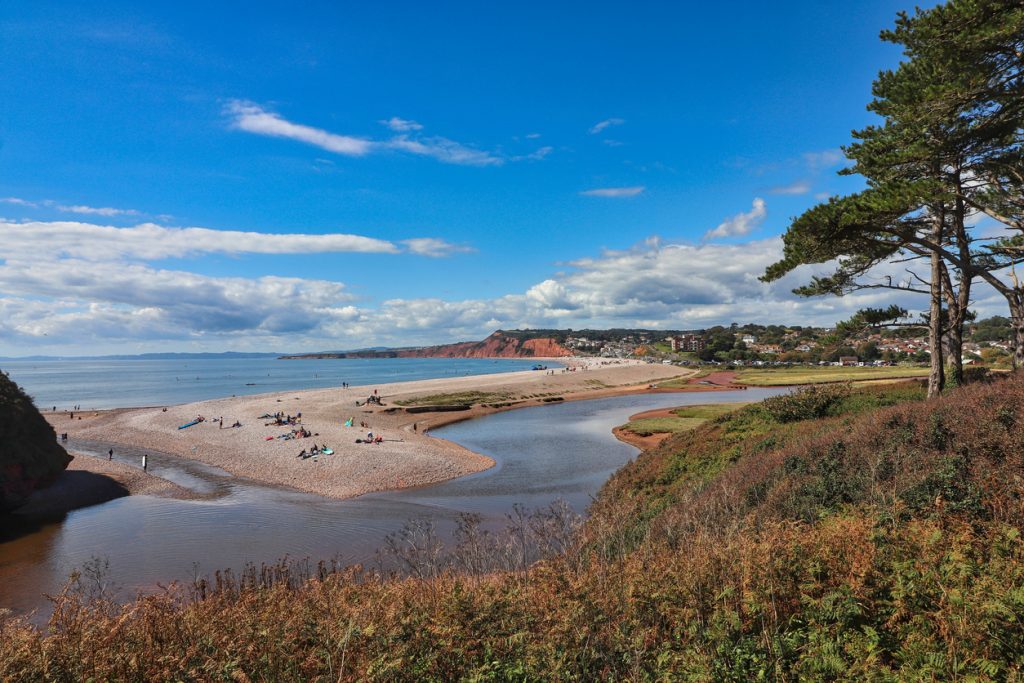
Budleigh Salterton is a great alternative to Exmouth if its counterpart is too crowded – you can either drive (around 10 minutes), take a bus or a taxi (here’s my recommended taxi company for Exmouth).
Just a warning – Budleigh Salterton is a pebbly beach, which is why it’s not usually as busy! But despite it not being quite as comfy for sunbathing, it’s well worth visiting.
Beach walks in Budleigh are charming – you can take in the red Jurassic Coast cliffs and vistas over the River Otter.
You can also walk from the beach up the river, where you’ll eventually reach the charming village of Otterton, which has a historic mill.
Beachside cafes line the waterfront – if you want to try a Devon crab sandwich, this is the place. In the affluent town, which is just a five-minute walk from the beach, there are lots of independent retailers.
Combine a visit to Budleigh with a trip to the Lily Farm Vineyard in Knole (about a half-hour walk from the beach). This is a gorgeous family-run vineyard.
Booking is essential, but it’s a wonderful way to learn about English wines (and try a few, of course!).
If you fancy a hike, I’d also recommend walking to Ladram Bay Beach. Unfortunately, this beach is only accessible if you’re staying at the adjacent holiday park. It’s a beauty of a beach, so it’s a shame there’s no public access!
However, you can enjoy views across Ladram Bay from the coastal path above.
Here’s a loop walk that takes in Exmouth, Budleigh Salterton, Ladram Bay and Otterton.
Dawlish Warren
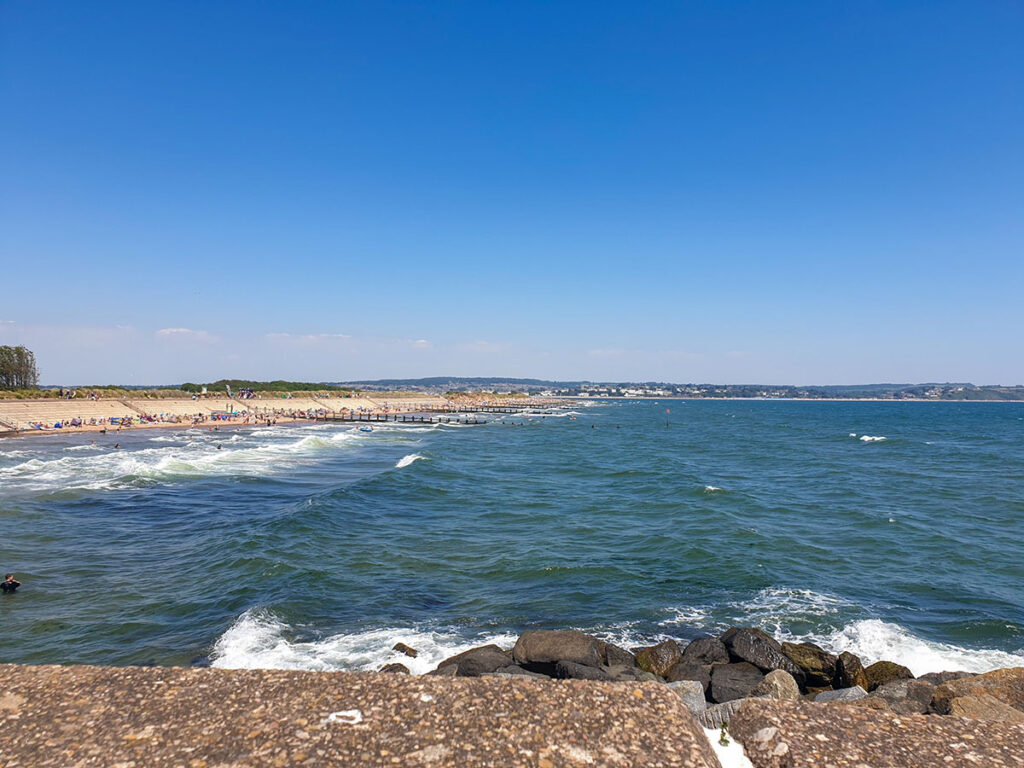
Sitting just over the Exe Estuary from Exmouth, Dawlish Warren is a popular place for a British beach holiday.
Here, you’ll find beach shops and plenty of ice cream stalls, with space on the sand for sunbathing and taking in the atmosphere.
It’s also one of Devon’s blue flag beaches, which means that it’s rated for its cleanliness.
Dawlish Warren is home to one of the most scenic railway journeys in the country, and it’s also where Isambard Kingdom Brunel’s failed atmospheric railway was.
You can easily drive here from Exeter or Exmouth. On the way, stop and visit Powderham Castle!
See all of the best things to do in Dawlish here.
Branscombe Beach
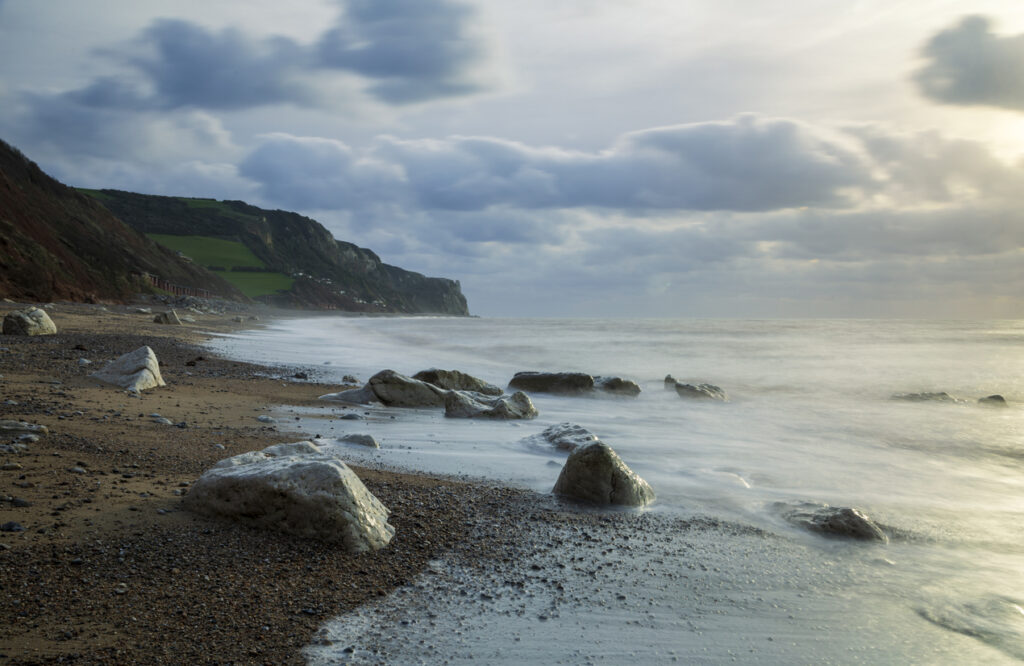
Just to the east of Sidmouth, in the heart of the Jurassic Coast, sits the scenic Branscombe Beach.
It’s a shingle beach and is a wonderful place to take in how epic the Jurassic Coast is, with its huge cliffs and ancient fossils.
While it’s not one of the most sunbathing-friendly beaches and it doesn’t offer a host of facilities, it’s one of the best beaches in Devon for scenic clifftop views and awe-inspiring scenery – this is the Jurassic Coast after all!
The walk from Branscombe to Beer is exceptionally impressive.
It’s worth checking out the village of Branscombe, too – you can check out my full travel guide to the best things to do here.
Bovisand Beach
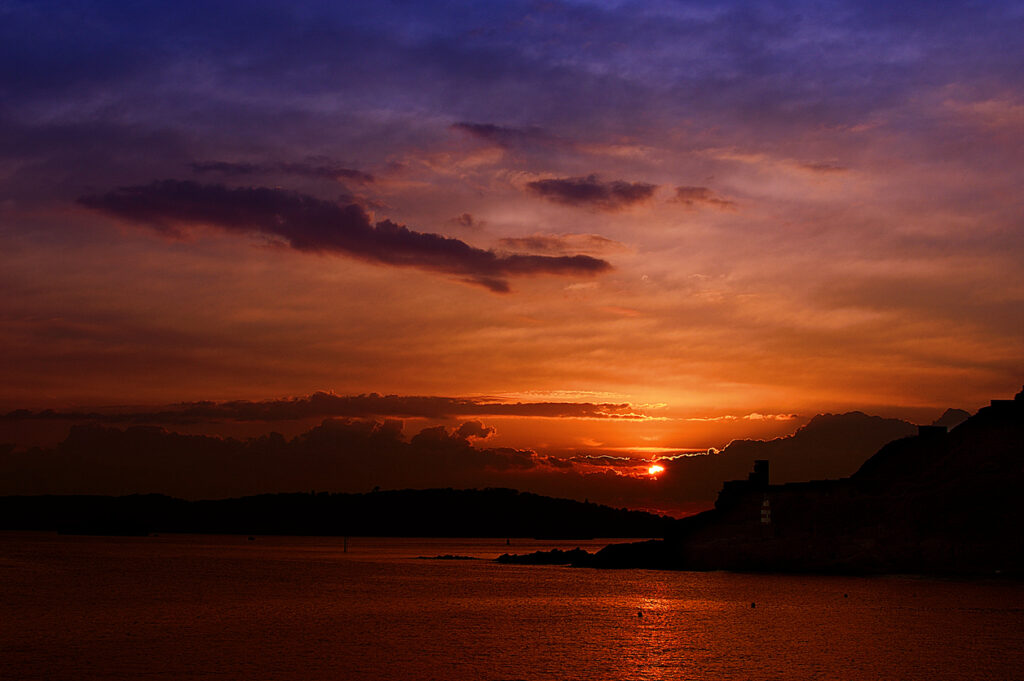
The sandy beach of Bovisand has long been a respite for Plymouth locals.
This Devon beach is bookended by two cliffs on either side; it’s a sheltered cove with shallow water and a fairly large patch of sand when the tide is out!
Situated a 20 minute drive from Devon’s biggest city (or you can walk there on the coast path!), Bovisand is a gloriously sheltered stretch of golden sand and turquoise water, in the heart of the South Devon AONB.
On clear days, you can see across Plymouth Sound and into Cornwall. It’s also in prime position for walks to Wembury and the River Yealm.
As one of the most accessible beaches near Plymouth, it can be fairly popular, but usually, it’s quiet enough to find some space for your towel!
The waters are calm and fairly warm (in the summer, for UK standards!), making them ideal for swimming – there’s even a bit of sea life if you fancy snorkelling!It’s definitely one of the best beaches around Plymouth!
Wembury Beach
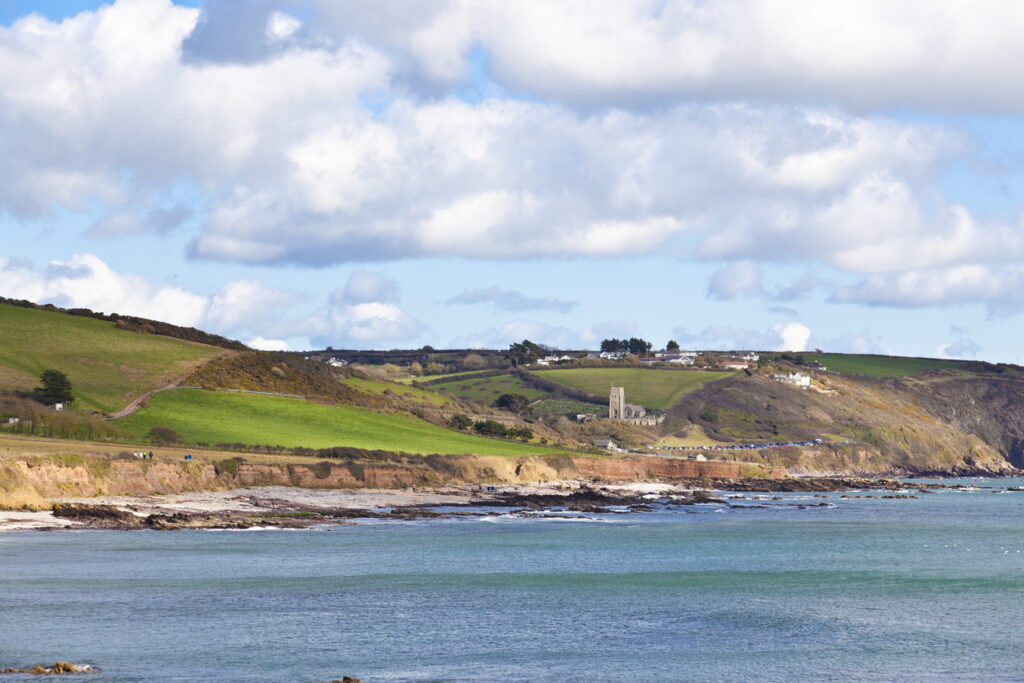
When a beach is managed by the National Trust, you know that it’s a beauty!
Set in an AONB, Wembury Beach boasts clean water, soft sand and a spectacular section of the South West Coastal Path – you can even hike from here all the way to Plymouth.
Fancy learning a little more about South Devon’s natural environment?
Visit the Wembury Beach Marine Centre, which is managed by the Devon Wildlife Trust.
Here, you can learn about the coastal animals and plants that call this part of the country home – and what you can do to protect them!
They even offer rock pool safaris where you can see nature in action!
If you fancy some food or drink, head to The Old Mill Cafe which is located in a 12th-century building, and is open for light snacks, drinks and other refreshments.
There are toilets and a car park on-site – parking is free for National Trust members.
Bigbury on Sea
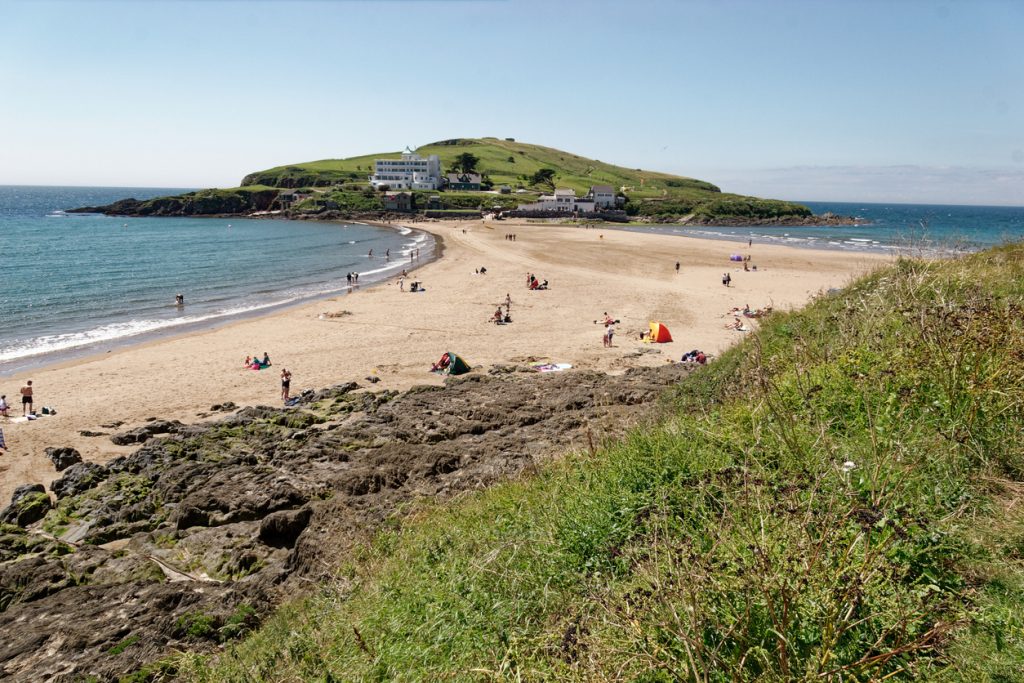
While the breaks aren’t quite as legendary here as in Woolacombe or Westward Ho! on the north coast, there’s plenty for beginners and improvers to get stuck into.
Fancy something more relaxing? Hang out on the powdery sand, or visit the famous Burgh Island.
This is a tidal island, Burgh Island, which was once the home of Agatha Christie – she wrote two of her books while staying here!
Burgh Island is home to an art deco hotel (which is well worth staying in!), but you can venture across the enjoy the lovely coastal views or have a beverage or two in The Pilchard Inn.
Getting to the island is an adventure in itself; as it’s a tidal island, you can walk across at low tide. But at high tide, you’ll need to climb aboard the much-loved sea tractor to make the short journey!
Beer Beach
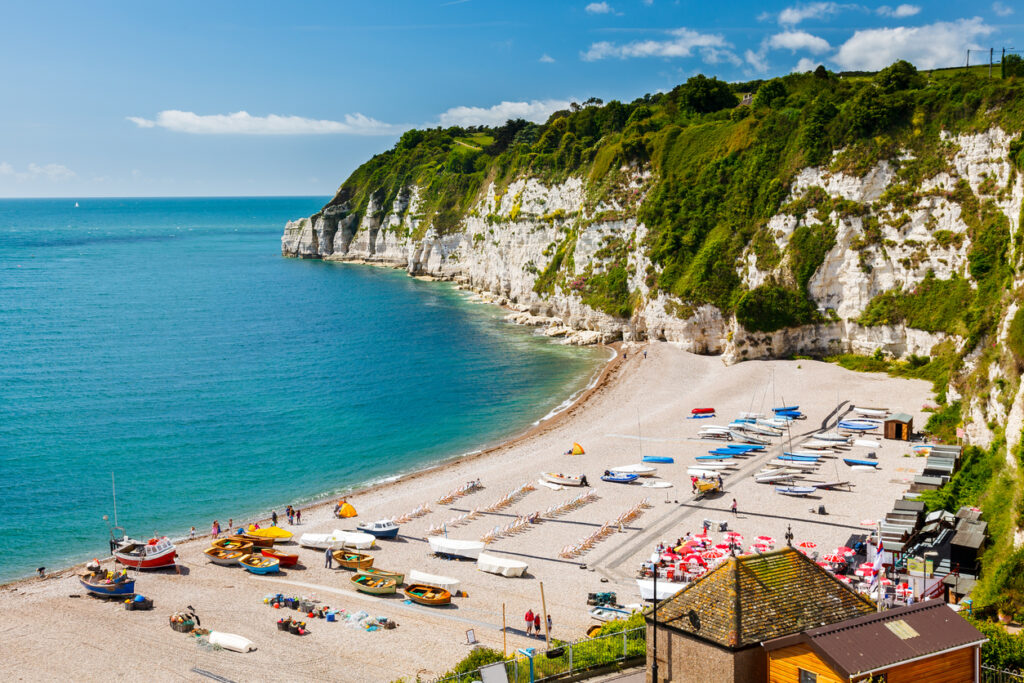
“A beer beach?” I hear you ask. This beach – and the town it backs onto with the same name – has nothing to do with beer, but it’s a fun name nonetheless!
In the shadow of limestone cliffs, Beer Beach is a wonderfully scenic secluded spot, with lots of fishing boats going out to sea each day (it’s a working beach still!).
It’s popular with keen swimmers, but the water does get deep quite quickly here, so be mindful if you’re with children or aren’t too confident.
Beer is a picturesque village that’s worth strolling around.
There are plenty of pubs in town – and yes, you can grab a beer at them – and there are also plenty of attractions. Don’t miss doing a tour of the Beer Quarry Caves, which are manmade caverns dating back to Roman times.
Hope Cove
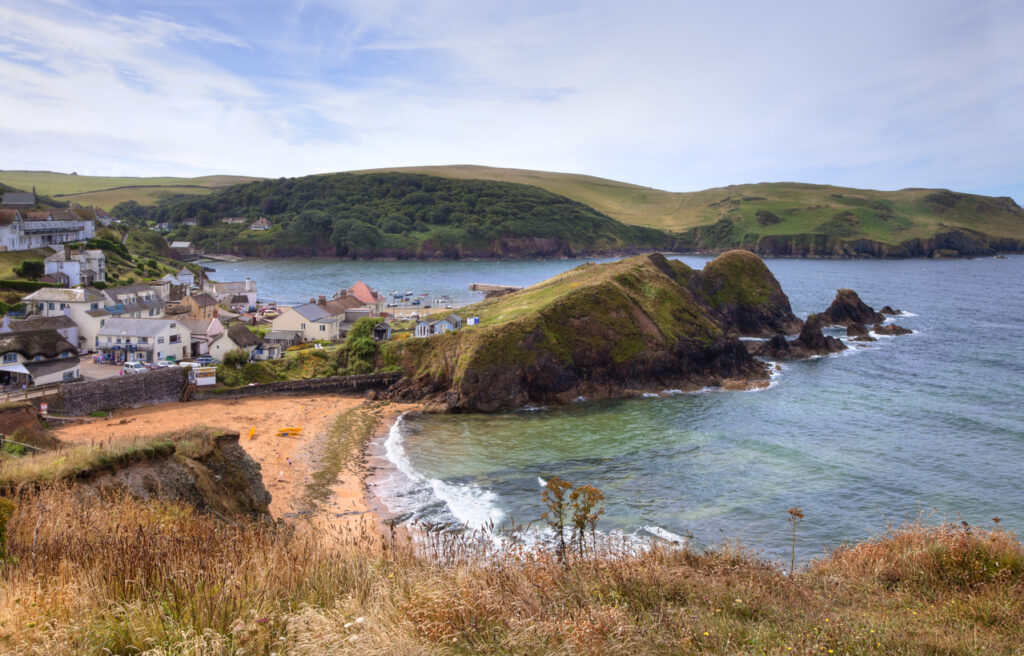
Hope Cove sits near the village of Salcombe, and I think it’s one of the most picturesque beaches in the area.
Hope Cove Beach actually consists of two beaches – Mouthwell Sands and Harbour Beach – but they kind of merge into one.
Mouthwell Sands is a lifeguarded beach with lots of rock pools and plenty of nature to enjoy. Harbour Beach is longer, perfect for strolls against the gently lapping ocean.
Once you’ve finished taking in the mesmerising coastal views, there are a few excellent pubs and restaurants in town. I adore The Cove, where I once feasted on vegetarian “fish” with a mountain of chips – it also claims to be “THE UK’s Best Craft Beer Bar”!
Oddicombe Beach

A sandy cove tucked in below Babbacombe, Oddicombe Beach is surrounded by lush green trees, making it any beach fan’s dream!
Oddicombe is a beautiful bay consisting of sand and shingle and surrounded by South Devon’s famous bright red cliffs.
As it’s tucked into the cliffs, you can access it either by hiking down or taking the charming Oddicombe Cliff Railway, which has been running since 1926.
So what to do once you’re here? Swim in the sea, head to the rock pools or take a bite at Three Degrees West Café and Bistro, taking in the dramatic ocean views!
Bay Watersports have a rental office here, so you can hire a kayak or paddleboard or pedalo – or, of course, relaxing on the sands is an option too!
Oddicombe is only a short journey from Torquay and its stunning scenery makes it one of the most popular beaches in the area. If you’re visiting during peak season, I’d recommend arriving as early as possible.
Slapton Sands
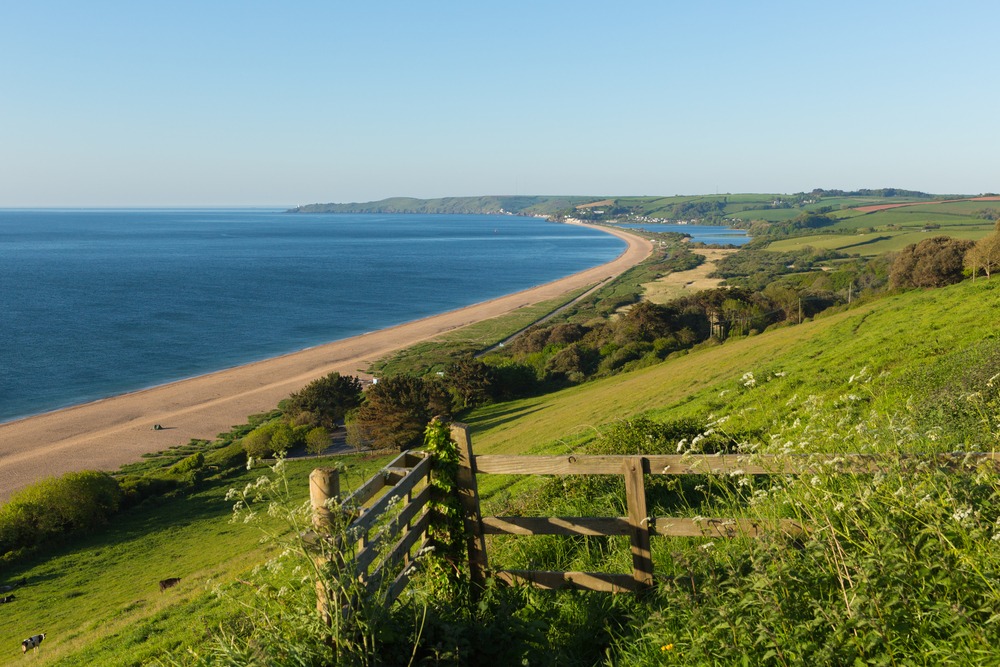
If you’re on the hunt for the most fun beaches in Devon, Slapton Sands may well provide!
Wildlife? Check. History? Check. Family-friendly attractions? Check. Slapton Sands, located halfway between Salcombe and Dartmouth, has something for everyone.
On one side, you’ll find the Slapton Ley Nature Reserve, a 490-acre body of water – in fact, it’s the largest natural freshwater lake in the southwest!
It’s a site of special scientific interest (SSSI) and a National Nature Reserve (NNR), where you can take an easy walk around the surroundings.
Slapton Sands is a three-mile stretch of shingle beach that separates Slapton Ley from the sea; which is part of the South West Coast Path.
Slapton Sands was also a site of Exercise Tiger – a tragic rehearsal for the D-Day landings in Normandy.
Exercise Tiger was supposed to be a practice run for the landings on Utah Beach across the channel, but nine German E-boats managed to sneak in amongst the ships and sunk them, leaving over 700 American soldiers to die in the chilly waters.
Soldiers were also killed by “friendly fire” during the procedure.
You can honour the memory of these fallen soldiers at the Exercise Tiger Memorial.
So while Slapton Sands is an excellent place to enjoy golden sand and beach walks, it’s also somewhere to fully engross in Devon’s World War Two history.
Blackpool Sands

Welcome to paradise!
Blackpool Sands may not be Thailand, but it’s without a doubt one of the most beautiful beaches in South Devon, and on a hot summer’s day, you’ll certainly be pinching yourself thinking “is this really England?!”
Blackpool Sands (named after the nearest village, which is called Blackpool – not after the city in the north!) is one of Devon’s blue flag beaches, an award that was given due to its water quality and safety.
A sheltered bay surrounded by bright green trees, Blackpool Sands is predominantly shingle, although the beach does have some sand pits for kids!
There are toilets, showers and a car park, and the Blackpool Sands Café and Takeaway is open every day until 4:30 pm.
The South West Coast Path runs through Blackpool, venturing up the cliffs on either side – ideal if you want to take in some of Devon’s best cliff views!
Blackpool is around a 15 minute drive to Dartmouth, its nearest sizable town.
FAQs about the best beaches in Devon
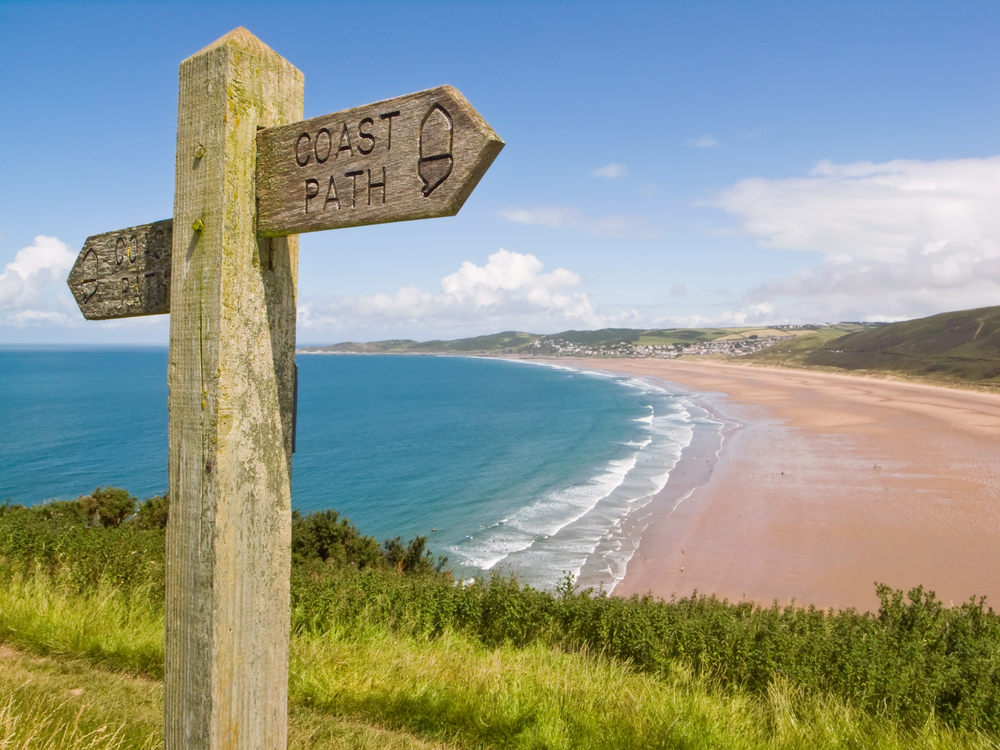
What are Devon’s best dog-friendly beaches?
The best has to be Saunton Sands in the north of the county.
This huge expanse of sand has plenty of space for both you and your pooch, plus it’s home to the most expansive network of sand dunes in the country!
If you’re in the south, Dawlish Warren Beach permits dogs year-round and is just a short journey from Exeter.
What is the best family beach in Devon?
There are plenty, but I’d recommend some in South Devon, like Blackpool Sands near Dartmouth.
Alternatively, beaches around Torbay, like Paignton Beach with its pier or Goodrington Sands which is home to Splashdown Quaywest Waterpark, are always great for families!
In North Devon, Westward Ho! has lots of family-friendlty attractions.
What is the best beach for water sports in Devon?
Water sports enthusiasts will find plenty to love in Devon, but for general watersports, Exmouth is the ideal spot.
Thanks to its calmer waters and range of currents, here you can enjoy SUPing, canoeing and sailing. If you’re looking for the best surf beaches, head to Woolacombe or Westward Ho! in the north.
Which part of Devon has the best beaches?
North Devon has more rugged, wild beaches, whereas South Devon’s are more sheltered with white or golden sand, some with palm trees!
I wouldn’t say either of them are better; they’re different, and it depends what you’re after.
East Devon has lots of pebbled and shingle beaches (apart from Exmouth) which makes for excellent hiking but sunbathing’s not as comfortable!
Can I swim in the sea in Devon?
Absolutely! The seawater in Devon is warmest in August and September; I find swimming in Exmouth to be warm enough without a wetsuit from June to October (but I’m used to these colder waters!).
When swimming in Devon, check the beaches for lifeguard signs – a red flag means that the water is too dangerous for swimming.
Are there any sandy beaches in Devon?
Yes! Devon is teeming with sandy beaches; East Devon has a few pebbly beaches, but many in South and North Devon have soft powdery sand or a mix of sand and shingle. This list features the very best sandy beaches in Devon!
How many beaches are there in Devon?
There are around 130 beaches in Devon, ranging from vast expanses which stretch for miles to tiny little hidden coves.
With so many beaches, you can guarantee that you’ll find somewhere for hiking, paddleboarding, swimming or surfing – whatever you fancy doing on your trip to Devon!
Is North or South Devon better for beaches?
It’s hard to say. The north coast of Devon has more hidden coves and wild cliff scenery, whereas South Devon’s beaches are more sheltered, with palm trees swaying in the wind and long sandy stretches.
South Devon is generally more family-friendly, with calmer waters, whereas North Devon’s better for surfing and dramatic ocean views.
Are you ready to check out the best Devon beaches?
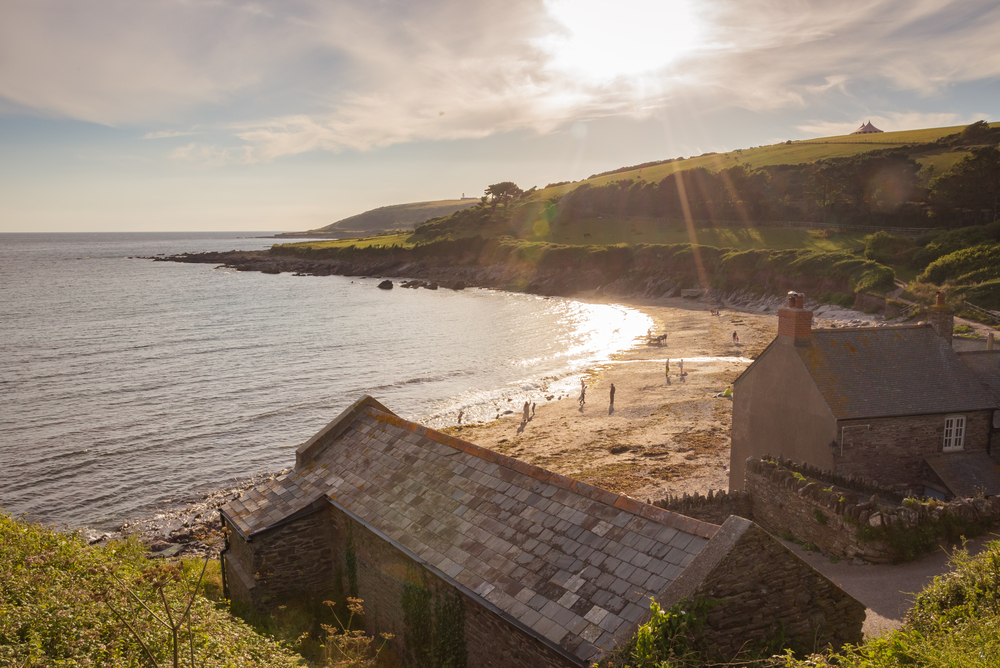
From secluded coves to popular surfing spots, I hope that this list of the best Devon beaches has inspired you to see more of this county’s coast!
While Cornwall’s beaches are legendary (and they deserve their prestige – check out my list of the best beaches in Cornwall to see what I mean!), Devon’s are often overlooked and are certainly something to shout about.
Whether you want an expansive family-friendly beach or a tucked-away cove that’s far from the crowds, one of Devon’s 130 beaches will provide!
Surfing, swimming coastal walks, stand up paddleboarding, drinking and enjoying the views or just relaxing on the sands on a hot summer day – all are possible on these glorious Devon beaches.
I hope that this article has been helpful! Don’t forget to check out the rest of my Devon posts and feel free to drop me a message on Instagram if you have any questions.

